 Shulinkou Air Station
Shulinkou Air Station

 Shulinkou Air Station
Shulinkou Air Station

| Updated 3 Nov 2005 |
NOTE: This page was created with the help of those who were at Linkou during the "Early Years" from 1955 through 1959. If you have any information, history, stories, tales, and/or photos from this era that you would like to contribute, please e-mail me. This is your opportunity to let others learn of your experiences.
|
|
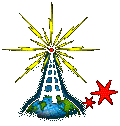
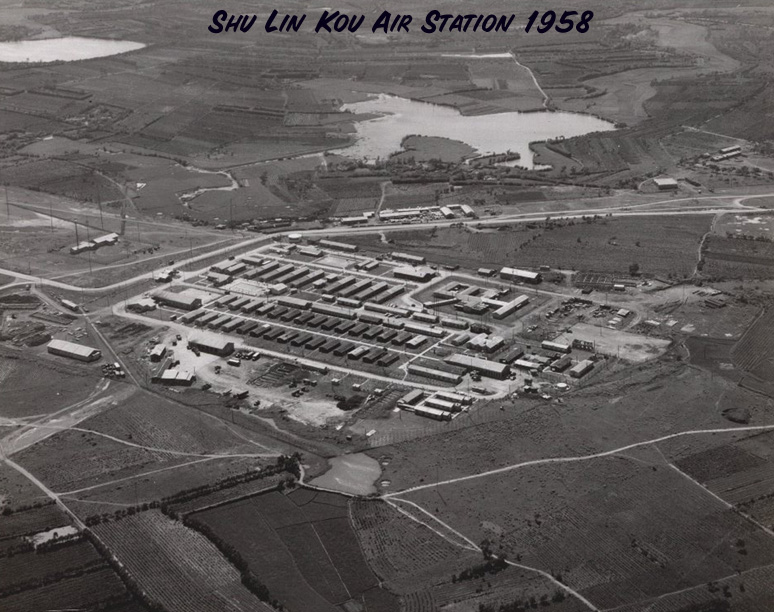
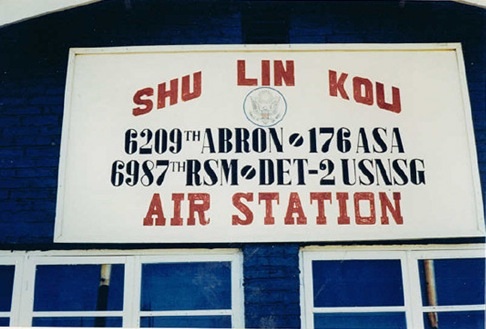
| "EARLY YEARS" PHOTO PAGES (CLICK HERE) |
At that time, it was designated the 6925th RGM DET 1 which was a detachment out of Clark Air Base in the Philippines. The unit later was designated the 6987th RSM. The sign shown above, was displayed on the side of the base operations building for the various units assigned to Linkou in 1958.
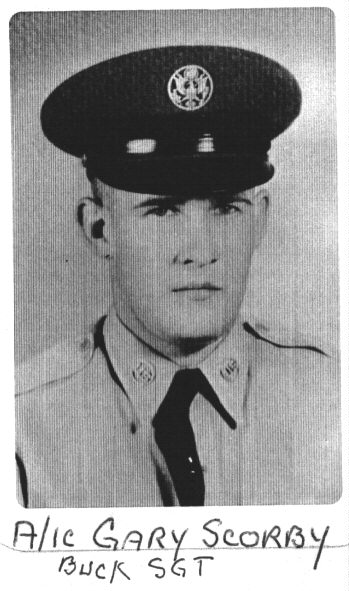
Gary Scorby (SLK-57/58) describes the atmosphere of Shulinkou back then: "Taiwan was a real hot spot in 1958. We were not sure how far the Chicoms would go. By info gathered, they were filling up airfields along the coast of China and making practice bomb runs at Taipei. Also, the Chicom Air Force was conducting air battles almost everyday over the Straits of Taiwan. Broadcasts from Radio Peking were telling us to get off the island because Taiwan was going to be liberated. We were at the point of taking them serious."
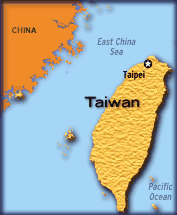
"It was about Sept or Oct while this was happening. Some of us were getting ready to ship out. One day the staff had a meeting and informed us we were extended for another three months. You can imagine how overjoyed we were.... The Linko commander even put us on class B pass for Taipei. The reason we were extended, was that they did not have replacements to relieve us. They did bring in people from Japan and expanded our mission. Also brought people from Security Headquarters in Texas. I don't think it would have been quite so bad if we had been issued battle gear, but at that time we didn't even have a sling shot. You know what would have happened to us if the Chicoms had succeeded in taking the island."
In the words of Don Milano (SLK-58/59): “I too am a 'graduate' of Shu Linkou. In May 1958, I was stationed in Japan when they asked for volunteers to go to Formosa. I was a cryptographer and they had a shortage of them at SLK. I was the only one to volunteer but we all wound up going there. I may be the only veteran that ever opted to leave Japan to go to Formosa. Late May 58, I arrived in Taiwan. That ride up the hill, all the time thinking 'there's an airbase up here?' and upon arriving at SLK, 'this is an airbase?' Memories, aren't they great!?”
Don says: “I was stationed there from May 58 to Aug 59. You were lucky only to worry about a Chinese invasion. They sent a 1/Lt. in to speak with the crypto guys and we were told that if the expected invasion came and they couldn't evacuate us in time, that they would not allow us to be captured. Believe me, we were more worried about being killed by our own guys. One night at the peak of the action, I left work thinking that this would be my last day on earth and wondered how our military 'disposed' of it's own troops. Needless to say, we prevented the invasion.”
As Don remembers: “Our group of guys were Ambeuhl, Pluta, Fisher and Miller. (See photo of "the Boys" below) Fisher's name was Bill, the rest I don't recall. So many memories - rats in the barracks and chowhall, Queenie the mascot dog, the day of our arrival and a mountain of free warm Heineken beer, these and others have to be the best memories I have...and it only seems like yesterday.”
Don Milano (1958-59): “The evening prior to my departure for the states, I stood outside the barracks and told myself, ‘Donald, you're making the biggest mistake of your life, leaving Taiwan.’ To this day, I still regret leaving. Heck, I was homesick for Taiwan before I even left it. I too have loads of pix, mostly slides. .....Saigen.” Below are a couple of photos showing Don Milano with some of "the boys" at both the Linkou pool, or downtown in what they referred to as "Sin Alley."
Prior to 1957, the original barracks had plywood walls and flooring with a canvas roof pulled over the top and down the sides. Each barrack was home to just a few airmen
with a stove in the middle for heat and surrounded by bunks. These primitive
units made way for more modern barracks which were constructed with
corrugated aluminum. The newer barracks were connected in an "H" shape
with the john and showers in the middle. All were open bay, except for two
cubicles with short walls on the end for the barracks chief and his
assistant.
The operations compound consisted of several enclosed trailers backed up to
and radiated out from a square building estimated to be 30' by 40'
as recalled by Scorby. According to EJ Ledet: "You would enter the covered walkway, turn right, turn right again and up
steps into the intercept area. H-1 vans butted up to a common room in
which the trick supervisors were stationed. I remember when you walked in,
on the left, second van up, there were Navy people on positions."
As told by Scorby: "I remember entering the main door to the compound where there was a large bulletin board directly ahead which we walked around into the main complex. It seems like there were a couple of desks for the shift sgts. On one side of the room we had a frequency meter. Speaking of the frequency meter, when they sent new rookie operators to Linkou, we would have to side saddle with them. With a serious look on our face we would tell the poor jeep to ask the shift Sgt for a ruler so we could measure a frequency. Of course they always obliged."
Modernization involved the placement of sidewalks between each of the buildings at Linkou. These were made of bricks laid end to end. After a rain, these bricks would "squish" red mud straight up in the air with each step taken. They were referred to as "magic bricks" by those who walked on these sidewalks and ended up wearing the red mud.
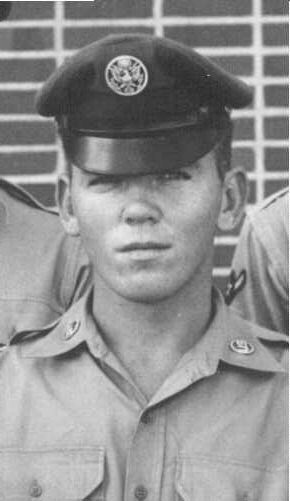
According to Stan "Red" Morris (SLK-57): "Back in the beginning, before two-to-a-room quarters, before real streets, and, yes, even before swimming pools, the streets were not paved, but rather just red mud. To prevent becoming mudcaked on the way to work,chow or anywhere for that matter, someone came up with the brilliant idea to make sidewalks out of bricks. These became known as the "magic bricks", because, while they were slightly above the mud, nobody had the foresight to cement them together. When the ground was wet (mud) and you stepped out onto the magic bricks, red mud would squirt straight up, usually up the inside of your trousers. So when you hear about the "magic bricks of Linkou" again, you will know what is meant. Oh yes, this was especially enjoyable when you had to walk from the latrine to your open bay barracks right after taking a shower."
It was in 1958 that construction of the swimming pool was completed at Linkou. Other recreational facilities included a bowling alley for Linkouites, however it was located in MAAG Compound in downtown Taipei. There were two bowling teams from "the hill" called the Linkou 200 and the King Pins. On the Linkou 200 team were Koser, White, Roberts, Vitkauskes, Giordano, Clark and Kress. While on the King Pins were Rufus Theodore Warmkessel III, Richard Poucher, Mckinon, Miller, Gilbert, Hanson, Arsiga, and Gary Scorby. (Perhaps someone out there can fill in the first names.) There were a total of 12 teams in the league.
 |
A group belong to Dog Trick in 1957. These Dogs were known as the "Linkou Rebels" because they were all from the South. They are standing in front of the prefabed barracks on Shulinkou's "Main Street" the morning after a night on Chung Shan Pei Lu. Discussing the prior evening's activities in Taipei are (left to right) Al Parris (CT), Albert "Sweet Pea" Rowe (FL), Stan "Red" Morris (TX), and Bill Clark (CT). According to Red: "Parris was a little worn from the after-effects of plum wine." A discussion was also being held concerning the need for a swimming pool on Shulinkou and upgrading of the barracks to something more modern. NOTE: In Oct 2005 we learned the correct and full names of Parris and Clark after Bill Clark discovered the Linkou website and e-mailed Morris. Makes this website all the more worthwhile when contact like this happens. - Webmaster.
Yet another Early Years story comes from Roy W. Boylan (SLK-58/59) who tells about: "In the fall of 1958, we didn't know whether we were going to be in the middle of a war or not. The Chicoms were stepping up their shelling of
Quemoy and Matsu and there were air battles going on. The Nationalist Air
 Force was far superior in the air - I remember one day when they downed 10
MIGs - mostly with sidewinder missiles. We listened into a lot of it and
wondered what it meant to us. During one of the air battles we picked up
some conversation in Russian and that worried us a little more. When they
came up with an evacuation plan for us, I was one of the people who would
stay behind to man the positions -- that didn't help my peace of mind.
Finally it all just simmered down.
Force was far superior in the air - I remember one day when they downed 10
MIGs - mostly with sidewinder missiles. We listened into a lot of it and
wondered what it meant to us. During one of the air battles we picked up
some conversation in Russian and that worried us a little more. When they
came up with an evacuation plan for us, I was one of the people who would
stay behind to man the positions -- that didn't help my peace of mind.
Finally it all just simmered down.
· We had some problems with rats. The worst part was during the movies. We
could hear them scampering around -- probably going after popcorn on the
floor. We were all wearing thongs and envisioned some rat snacking on one of
our toes.
· Off-time during the rainy season could be dull. Recreation consisted of
Ping-Pong and shooting pool in the day room. I remember we had an informal
Ping-Pong tournament and I won. I was feeling sort of proud of myself until
one of our houseboys challenged me to a game. He totally embarrassed me --
we later found out that Ping-Pong was their national game.
· I remember them building the swimming pool in 1958 and it made a big
difference. Us light-skinned guys had to be pretty careful in the tropic sun
- I got burned pretty badly a couple of times.
· One of the annoying things about walking around Taipei was constantly being
followed by people trying to sell me something ('Hey GI, you catchee my
sister -- she cherry girl!'). It was different one day when Phil Swayze and I
rented bikes and rode out into the countryside. When we came to some little
villages, the people would swarm out all with their index fingers in the air
shouting 'Ting Hao.'
It's a period in my life I will never forget." Says Boylan.
From Harmon Smith (SLK-57/58): "I arrived in Formosa, I think it was the summer of 1954. I had volunteered to go there from my home squadron in the Philippines, the 29th RSM. In Formosa, we were Det 3 of the 29th RSM. There were originally 35 guys in the outfit.
Chinese diplomats as well as big wigs. They had set up a pillbox out in the field, and sent troops in to take it. The foot soldiers went first, followed I guess by the tanks that were worth more than the troops. They were supposed to stop at a predetermined distance from the pillbox. Chiang Kai Shek's two F-86 Sabre jets came in and emptied their 50 caliber guns on their first pass, then came in and dropped napalm. The foot soldiers had gotten carried away, and swarmed all over the pillbox. The Sabre's dropped their load of napalm all over them. Have you ever seen what napalm can do? It was awful... Chiang and his officers left the viewing bleachers, and there was total silence. It was erie."
It wasn’t long before a couple of crypto operators arrived. The First Shirt of the outfit was a M/Sgt Balangio from Boston. He was not a USAFSS person. Only the six of us held Top Secret Special Intelligence clearances at the time.” I can only recall one Captain in Operations, I can't remember his name but he was from Boston. Then there was a Major who was the CO.
There was an excerpt from one guy who said they were told that if it looked like they were to be captured the AP's were supposed to kill them, before letting them be captured. They told us that too, but buddies I had in the Security Service in Korea, who had their positions overrun, were handed M1's and told they were now in the infantry. So much for not being put in harms way.
I find it almost comical that the navy had people on the site. An Admiral came up to our Shulinkou site one time, and asked if we would radio the 7th fleet if it looked like MIG's were headed their way. Their radar couldn't pick them up in time cause they could fly below the mountains on the coast then pop up over the mountains, and be on them before they could re-act. They had little manuvering room in the Taiwan Straits. He gave us the frequency and call signs to use. Every time we would try to contact them they would ignore us. They would be sending traffic to check signal strength etc. and we would try to "break" with a priority message, and they'd ignore us so we finally said 'to hell with them' and forgot about them. That's probably why they had a Navy contingent on the island.
Interservice rivalry was bad back in those days. Probably still is. I'd really like to know how they got water on the compound. when I left the island the Chinese were still drilling, if you could call it that. The rig they had would pound the ground into mud which they would suck out. This pounding rig thumped day and night for months before I left. I just wonder if they ever got anywhere, or if they finally let the Army Corps of Engineers do it." (Corps' employee/webmaster's note: I bet the Corps did!)
"I remember one time the Chinese were going to put on a show for American and 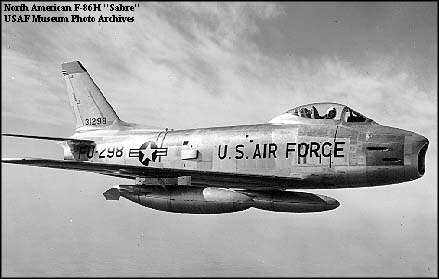
More interesting Linkou history as told by Harmon Smith: "The Peace Treaty had just been signed in Korea, and so I volunteered for a new site that was opening in Formosa. I landed at night at the airport in Taipei. There was a T/Sgt at the airport to greet new arrivals, and shuttle them to the MAAG compound. He had never heard of Det 3 of the 29th RSM, and the people at the MAAG compound hadn't either.
They put me up in a hotel, and told me they would try to find out something and get back to me. There were few Americans on the island, only the MAAG compound which was Army and there to teach Chiang Kai Shek's army in the use of American weapons. I stayed in the hotel for a week and heard nothing. I did enjoy the hot sulfer baths in the basement of the hotel however, but wanted to get out of there.
I thought by now they'd have me marked AWOL. I went back to the MAAG compound but they still could not tell me anything. While hanging around there I saw someone who looked familiar and collared him. He was Air Force. Hard to tell, as no one wore uniforms. They were all in civvies as was I. He told me to come back in the afternoon, there was a truck going to Linkow where he thought my outfit might be.
When I first arrived at the outfit the first shirt, one M/Sgt Blangio said 'who the hell are you and what are you doing here?' I showed him my orders and he said 'no one told me to expect you.' They never received any orders from the main outfit, 29th RSM in the Phillipines. Not unusual in those days. If I had any money, I could have taken a year sabatical somewhere and never been missed.
There were about twenty or so guys in the outfit. Mostly support personnel.
We set up operations in a little shack which contained about six hammerlund SP600 receivers and a code key so we could contact our DF sites to get fixes. If I remember right, we had a BC 610 xmitter for this.
We started a 24hr mission. There were four of us. After a few weeks we got a crypto center and the outfit began to gradually expand. Our mission at that time was to copy and break the grid messages of radar sites along the mainland. We did this by getting DF fixes on the transmitter that were sending grid messages, then having Chiang Kai Shek's pilots fly along the coast keeping track of their position every 5 minutes, debriefing them when they got back, matching their times to the grid message times. The mainland radar sites copied everything that showed up on their scopes. Friendly or unknowns and sent their gid messages to a filter center in Swatow.
We finally got their codes broken. The Chinese codes were not like the Russians. The Russians used a book code. An agent at sometime had stolen their book, and also a thing called a slipstick which was kind of like a slide rule that you set up their three letter call signs on, and it would tell you the book they were using and you would look up that book numer and have the codes. I beleive someone somewhere was trying to set up the Chinese codes in a simalar book form."
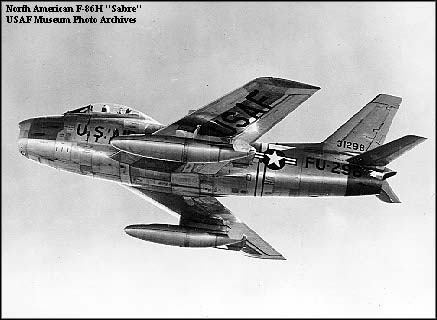 "At the time Chiang had 4 planes in his air force. Two prop planes and two Sabre jets. The Chinese were learning to fly MIGS and were being taught by Russian pilots. The Chinese pilots were afraid to fly over water and were constantly in contact with their GCA(ground control approach). As our outfit grew in size we eventually got some Chinese linguists. The outfit went thru many growing pains before that happened. we grew to about 40 intercept operators . Had four tricks. I was trick chief of one of the tricks.
"At the time Chiang had 4 planes in his air force. Two prop planes and two Sabre jets. The Chinese were learning to fly MIGS and were being taught by Russian pilots. The Chinese pilots were afraid to fly over water and were constantly in contact with their GCA(ground control approach). As our outfit grew in size we eventually got some Chinese linguists. The outfit went thru many growing pains before that happened. we grew to about 40 intercept operators . Had four tricks. I was trick chief of one of the tricks.
Originally we lived in one quonset hut. we then moved to 16 man tents and used the quonset hut for our operations building. M/sgt Blangio was from Boston and had an impediment of speech. He had been a POW in a stalag in Germany in WWII and I think it affected him. He was nuts. One day when the outfit was still small, under 40 men a General came by to inspect it. We were all lined up for inspection and Blangio walked out and saluted the General and said 'Welcome to my Island.' The CCO almost passed out.
The General went on to look at what passed for our chow hall. Bill Hallett was our cook. He was stupid drunk. He had been awarded the Silver Star in Korea, and been busted too many times to count. But because of the Silver Star, they wouldn't bust him to civilian. He and I were good buddies. Many times I tried to cover for him by getting another cook to fix breakfast when he was too drunk to do it.
Another good friend of mine, from far Rockaway Beach in New York, Pete Butler got drunk one night and rallied Chiangs' troops into a frenzy. There were about 400 of them and he was going to lead them on an assault of the mainland. Their numbers kept growing and they were fired up, and ready to go. They investigated for weeks trying to find out who the American GI was that got them riled up.
It was like being in a three ring circus at times. We would be up half the night laughing about the antics of Sgt. Blangio, and his building of outhouses to try and keep up with the demand. I'll leave this for another time.
The Linkou outfit continued to grow. An Army Security Agency unit moved in next door to us. Chiang Kai Shek had opened his gates of freedom. Chinese soldiers, captured in Korea who didn't want to return to the mainland, were absorbed into his Army and they stationed them out behind us. That Army hated us. We had been fighting them in Korea months before, and now they were guarding the perimeter of our antenna field. MAAG people were showing them how to use weapons, but they wouldn't pay any attention. A face thing. Did not want to admit there was something they didn't know.
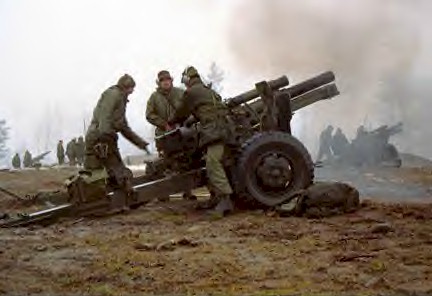 Adjacent to Linkou, the Chinese Army had howitzers set up for training purposes, and their shells would whistle over our heads all
Adjacent to Linkou, the Chinese Army had howitzers set up for training purposes, and their shells would whistle over our heads all 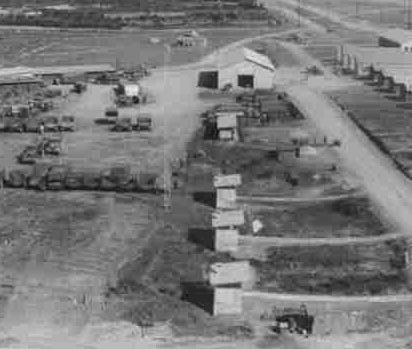 night while they were practicing. One night a shell landed on our shithouse!. A sixteen seater located at the end of our antenna field." (Photo on right-Linkou latrines and motor pool. Click to enlarge). "
night while they were practicing. One night a shell landed on our shithouse!. A sixteen seater located at the end of our antenna field." (Photo on right-Linkou latrines and motor pool. Click to enlarge). "
"There were public hangings every week in Taipei when I first arrived. The island was under martial law, and all offenses such as stealing etc. were punishable by death. The Taiwanese people could not go from one part of the island to another without a pass. I was given a card written in Chinese and told to have it with me at all times. Chaing seldom went out in public for fear of assasination. The Taiwanese people feared and hated him. He was a dictator in the truest sense of the word. Martial law was lifted shortly after I was there.
Once, I had an invitation to an afternoon tea given by Madame Chiang for American personnel at which time the Generalissamo made a brief appearance. I saved the engraved invitation for years, but as with so many things over the years, it got lost in the shuffle of my life. Well, this is my story about the start of an intercept site at Lincow" concludes Harmon.
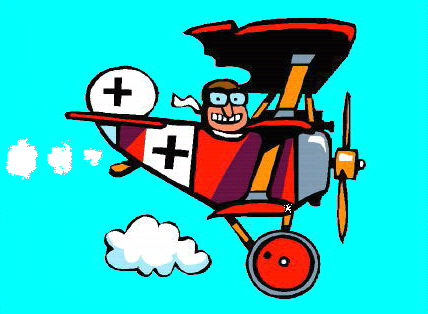
|
FACT: I am your Great-Great...-Great Grandpa Flight Commander, the Progenitor of 6987th RSM "Dawg" Flight Commanders!!!
CONFIRMATION:
Back in those 1958-59-60 days the shifts were called TRICKS; i.e., Trick 1, Trick 2, Trick 3 and Trick 4. 6987th RSM Personnel Actions Memorandum Number 83, 15Nov58, assigns newly-arrived 2Lt Elwood J. Ledet, AO3101264, and three other new arrivals, to trick operations. I was OIC, Trick 4!!! Yeah, Trick 4 later on to become Dog Flight [or, Dawg as some have bastardized it]. We were the first officers to be assigned to shift [trick] duty. 6987th RSM Special Order Number C-77, 22 Oct 59, changes my duty title to Flight Commander, with no change in duty or functional code. That's when the USAFSS was shifting names from tricks to flights, although we still called ourselves tricks for the remainder of my tour. Want more? See the attachment (furnished below) which is a copy of a farewell poem to Lt Ledet from Trick 4 on his PCS in January 60. It is signed by the entire trick. During my tenure, we had a trick paper which was prepared on 6-ply paper (ah, yes, 6-ply). It was called the FOUR STAR JOURNAL (a la Trick FOUR, a pun?) and prepared on the mid shifts with dissemination within the trick. The first or cover page was always a cartoon, some on the shady side, which had something to do with a person or event from Trick
PROCLAMATION: So, that should confirm 2Lt Elwood J. Ledet, AO3101264 as the "Grand-Daddy" of the 6987th Dawg Flight commanders.
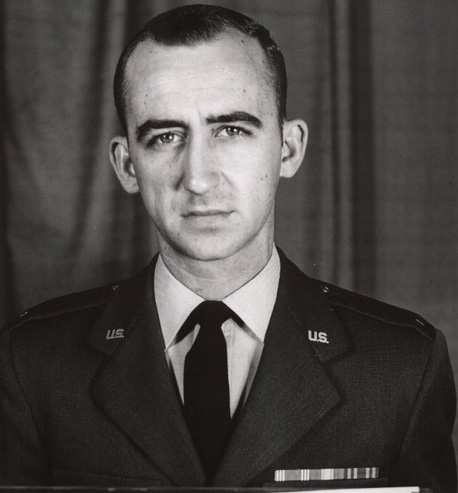
|
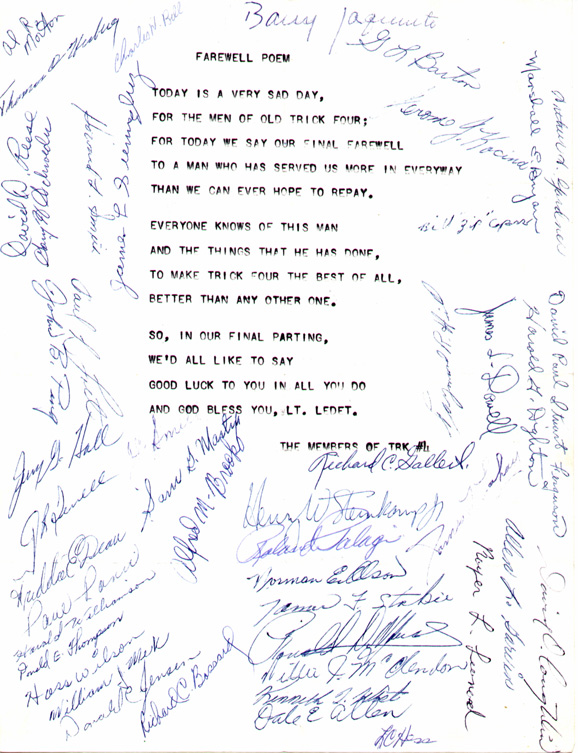 |
Linked in the table below are photos of Shulinkou Air Station, Taipei, and Taiwan taken by "Early Years" Shulinkouites. Narratives are provided under each photo which can be clicked on to enlarge for viewing.
.

|